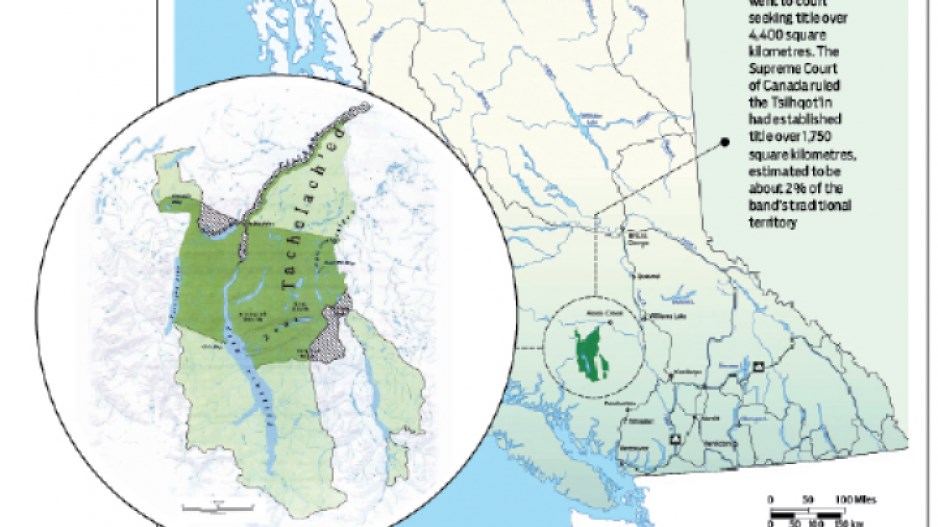One of the questions to arise out of the 2014 Supreme Court of Canada case that awarded outright title of land to the Tsilhqot’in First Nation was who would be responsible for things like policing and justice, resource extraction regulations, utilities and government services.
When the Supreme Court acknowledged Tsilhqot’in title to 1,750 square kilometers of Crown land southwest of Williams Lake, it failed to address governance issues.
“The Supreme Court wasn’t really clear in its decision around that in terms of governance,” said Aboriginal Relations and Reconciliation Minister John Rustad.
The B.C. government and Tsilhqot’in have now reached a framework for trying to sort out some of those rights and responsibilities.
The Nenqay Deni Accord, officially signed February 11, commits the provincial government and Tsilhqot’in to a five-year agreement to work out the transfer of control of the land to the Tsilhqot’in and address the many issues of governance.
“On the lands that are part of a title declaration, which is one component of what we’ll be working on with the Tsilhqot’in, there is still a lot of that that still needs to be worked through,” Rustad said.
“What this accord does is it commits us to addressing all of those issues – who keeps the road open, the power, how we deal with education and other issues on the title land.”
On fee simple lands owned by the Tsilhqot’in, Rustad said the province still has ultimate jurisdiction, but said going forward “we will be starting to implement joint decision-making.”
Rustad added that the federal government will still need to brought to the table, since some of governance responsibilities rest with Canada.
Meanwhile, as it sits down with the Tsilhqot’in in a spirit of cooperation, the B.C. government is bracing for a legal battle with the Stk’emlupsemc First Nation (Kamloops), which have claimed aboriginal title to traditional lands.
That claim differs in a very significant way from the Tsilhqot’in claim. The Tsilhqot’in deliberately identified all the private parcels of land within their territory and specifically excluded them from its claim. It laid claim only to Crown land.
The Stk’emlupsemc, by contrast, are claiming title to private land, including the area where the Ajax mine is proposed to be built.
The B.C. government announced in January that it plans to “vigorously oppose” that claim.
“The real difference of course with the SN case is the fact that they have claimed those private lands and we will vigorously protect the rights of private landowners in this case,” Rustad said. “We need to go forward with that because we want to be assured that the rights of private landowners is upheld.”




